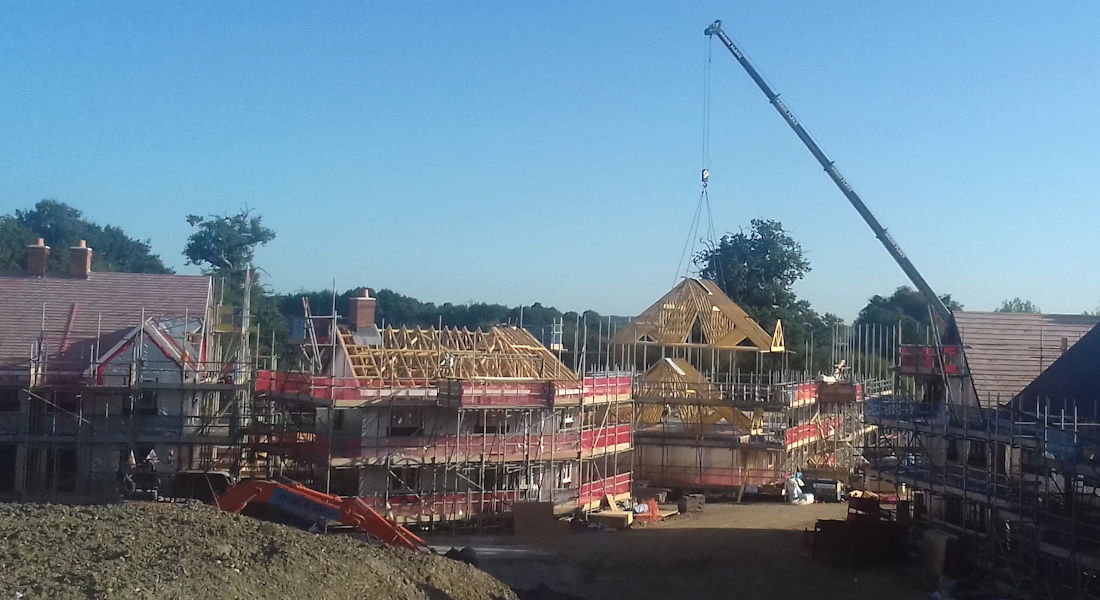
Timber Tales: Exploring The Art And Science Of Timber Construction
Timber frame construction is the oldest form of building technology, and there is evidence of wooden buildings in Britain dating back to the Neolithic period (4000- 2500 BCE). Archaeological sites in Balbridie in Scotland and Lismore Fields in Derbyshire have revealed a range of complex rectangular buildings with sturdy timber frames, wattle and daub walls, and thatched roofs.
How Were Early Timber Frame Buildings Built?
The earliest timber frame buildings were constructed without any metal fasteners or tools, relying exclusively on the interlocking joints of the wooden pieces. This must have taken a huge amount of skill and experience – there was certainly nothing ‘primitive’ about the work these carpenters did. However, as technology advanced, so did the methods of timber frame construction available to carpenters.
By the mediaeval period, carpenters in Britain and Europe had developed sophisticated joinery systems that allowed them to build far larger and more complex structures. And despite the popularity of stonework for the largest cathedrals, castles, and manor houses, the overwhelming majority of homes, farms, shops, barns, stables etc., were still built using timber frame construction.
Timber, Stone, Steel, And Concrete
With the development of steel and concrete building methods in the 19th century, timber frame construction fell out of popularity, as these materials were seen as more durable and cost effective than timber, especially at a time when native forests had been drastically depleted across Europe.
It wasn’t until the later 20th century that timber frames began to make a strong comeback, thanks to sustainable forestry strategies, as well as changes in building and engineering techniques.
The Benefits Of Timber Frame Construction
One of the major benefits of timber frame construction for modern development is its durability. Timber is a very strong building material with a high strength to weight ratio that can compete with steel and concrete under most conditions. This is combined with a flexibility under load that simply can’t be matched by concrete or steel. In the USA and Japan, for instance, timber framed residential buildings have been known to withstand strong hurricanes and earthquakes while neighbouring concrete and steel commercial buildings have collapsed.
Compared to steel and concrete structural elements, which can be prone to cracking and rusting, timber frames have a long lifespan and require less maintenance, making timber a cost-effective long-term approach to sustainable construction. Many of our 17th-century pubs, for instance, are built around timber frames that are still going strong after several hundred years, without needing replacement.
Often timber frame is chosen when speed of construction is important. A timber frame building can be water tight much more quickly than traditional masonry, meaning that work can start inside the building while brick, render, timber, or other external finish is fitted.
Is Timber Framing Sustainable?
What about sustainability? Sustainability is an increasingly important concern in construction, and in this area, too, timber frame construction is a surprisingly eco-friendly alternative to traditional building methods. Sustainably grown and harvested wood is a renewable resource that can be responsibly managed for long-term access to construction materials. Wood grown for construction creates a haven for local plants and wildlife, and also captures carbon, lowering atmospheric carbon dioxide.
Timber frames also have excellent natural insulation properties, reducing the need for additional energy consumption for heating and cooling, and preventing heat escaping through air pockets in porous concrete.
Next Steps
To find out more about timber frame construction and what makes it a strong, beautiful, and sustainable building strategy for modern buildings, please contact our team today by clicking here.
Click on the categories below to find out more about:

Connect with Us
Share this Page
More Posts
Recent Posts
- SC4 named Cala Contractor of the Month, October 2025
- Why is Neurodiversity so important in Construction?
- Our Favourite Carpentry Project Of 2024: Cromwell Court, Old Basing
- Case Study: Timber Frame Installation in Netley Grange, Southampton
- Turnkey Construction: 3 Make-Or-Break Details
- Why The RIGHT First-Fix Construction Company Will Save You Time
